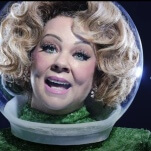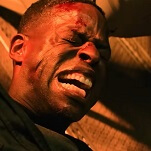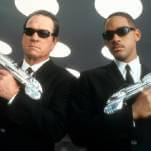Bipolar disorder has been in the fictional spotlight over the past year, afflicting the protagonists of both Homeland and Silver Linings Playbook. Yet, while both of those works show the potential dramatic impact of manic depression, Juliann Garey’s debut novel dives further still by offering a longer timeline. Moving back and forth through a life lived with the disorder, Too Bright To Hear Too Loud To See provides a visceral, sometimes hard-to-read look at the attempt to find happiness and stability when they can seem impossibly out of reach.
Greyson Todd is undergoing electroshock therapy at a mental hospital when the novel begins, and his attempts to grasp at memories the treatment strips from him form the framework of the story. The different periods of his life suggest Garey could have written three separate novels about the man. There’s his rough childhood spent trying to protect his mother and siblings from his bipolar father, who can’t hold down a job and is prone to abuse and frivolous spending when manic. Still, Greyson manages to marry his childhood sweetheart and make it as a big-time Hollywood agent, which lets Garey offer some entertaining looks at life among the stars, complete with lots of cocaine, tawdry affairs, and child actors more together than their parents. Then there’s the debauched pilgrimage Greyson takes around the globe after walking out on his family. Tucker Max might be proud of him as he pays cleaning ladies to sleep with him and uses his wealth to get away from a breakup cleanly.
But the uniting thread is Greyson’s illness, and Garey expertly shows the devastation it wreaks on his relationships and ability to function in society. Todd’s cinematic fascination provides an effective extended metaphor as he offers up shots of himself and his mental state, whether it’s the high-speed super-efficiency he feels in his manic period that leaves him infuriated by all the “ass holes” around him, or the uselessness of people trying to persuade him that his life isn’t that bad when he’s gripped by the endless depths of depression.
The narrative’s weakness is in the transitions. Greyson’s rapidly shifting mental highs and lows are a result of his disorder, but Garey never provides adequate explanation for how he actually rises from the low points she puts him in, episodes that could cripple his ability to achieve the success important to the plot. But it’s a forgivable oversight, given that the story never lags, though it is sometimes painful to proceed through Garey’s detailed depictions of her protagonist’s delusions and self-destructive behavior. Too Bright To Hear Too Loud To See personalizes an often-stigmatized mental illness, turning Greyson’s struggles into something comprehensible and universal.









































